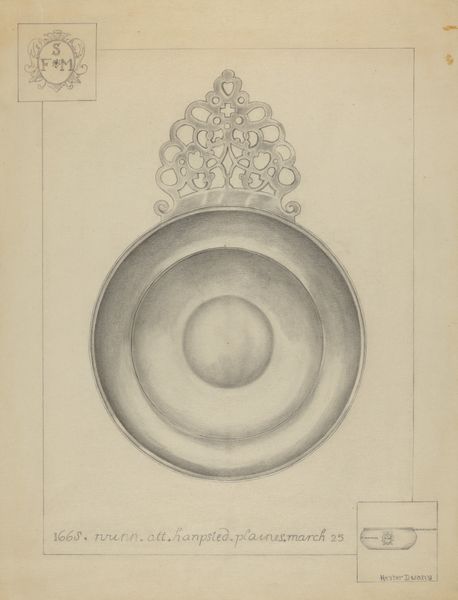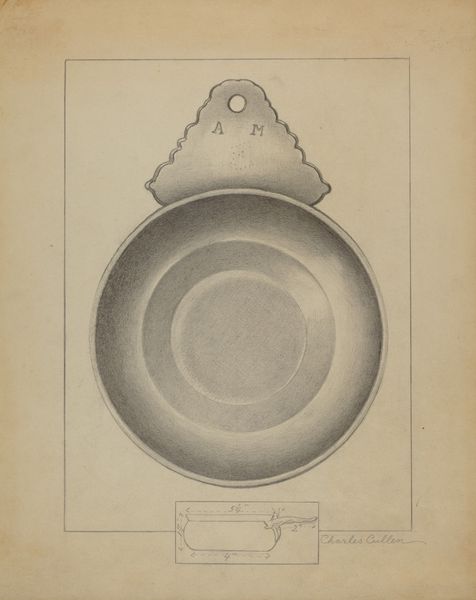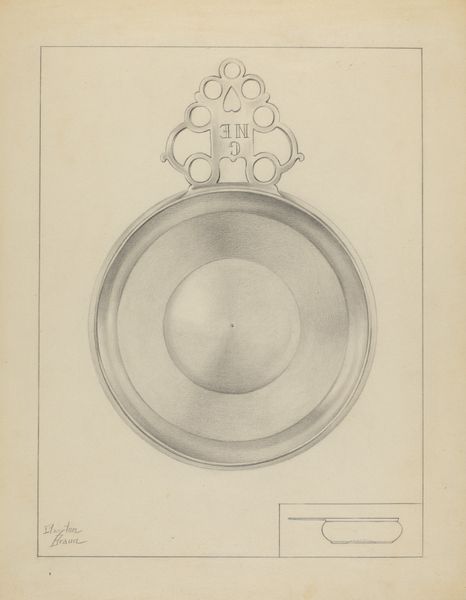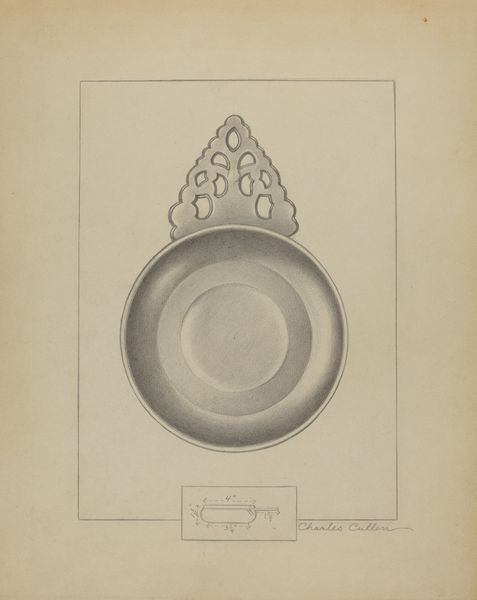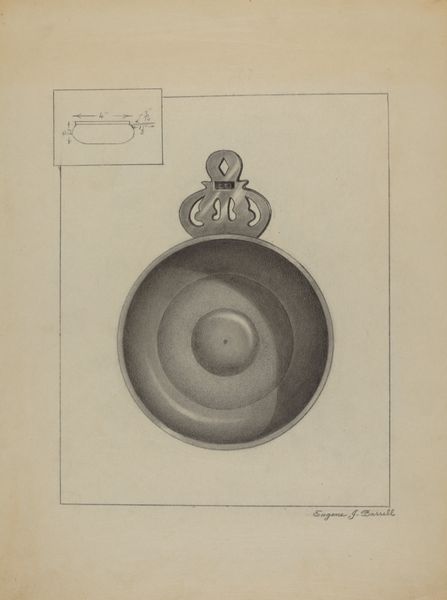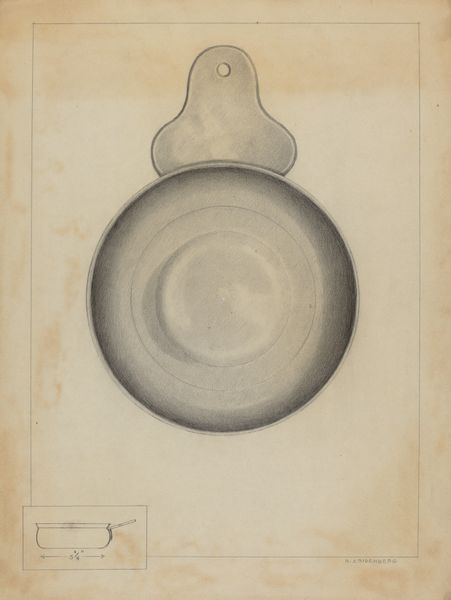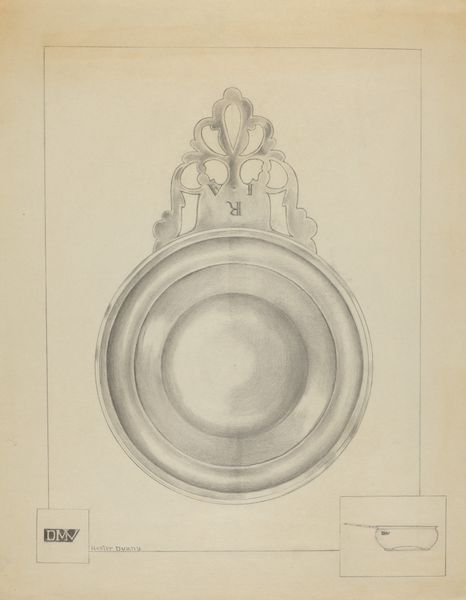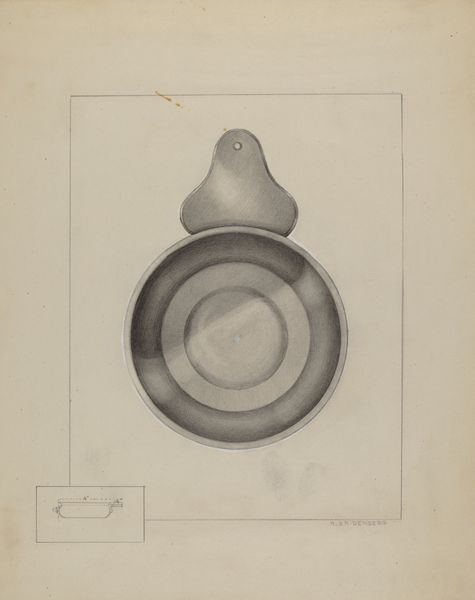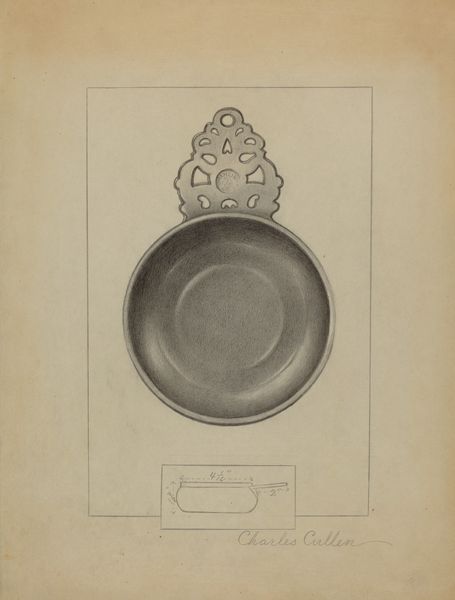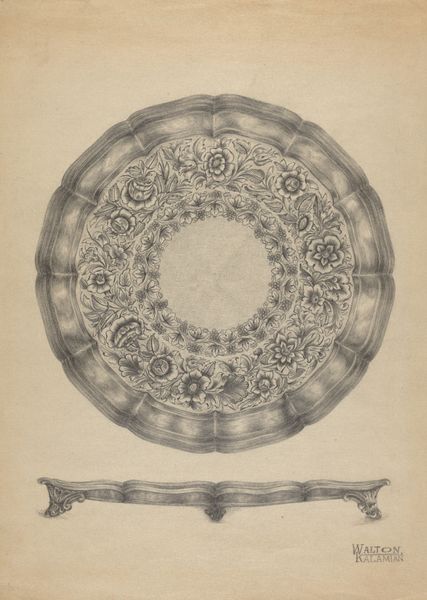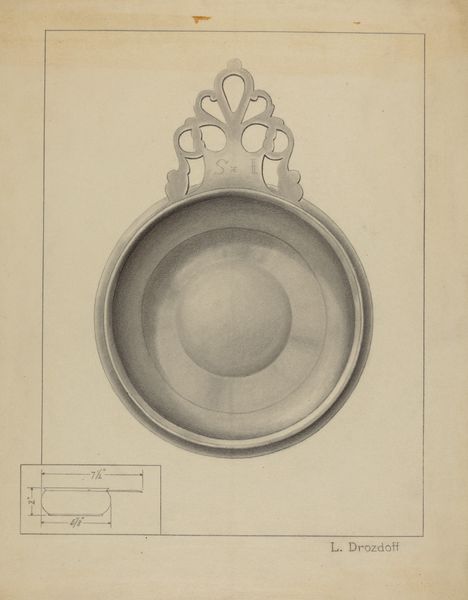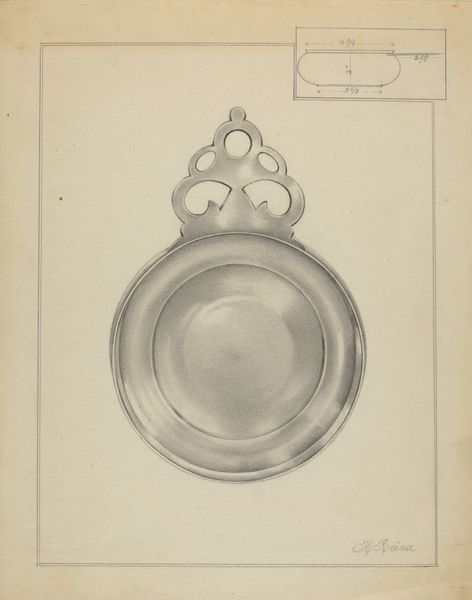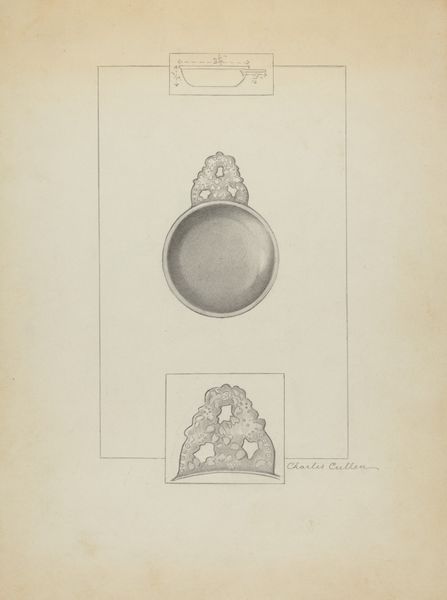
drawing, paper, graphite
#
drawing
#
paper
#
graphite
#
academic-art
Dimensions: overall: 29.9 x 22.8 cm (11 3/4 x 9 in.)
Copyright: National Gallery of Art: CC0 1.0
Curator: This drawing by Louis Annino, made sometime between 1935 and 1942, is entitled "Pewter Porringer." It’s graphite on paper, depicting a domestic object. What's your immediate take? Editor: A pewter porringer…rendered so meticulously in graphite. The precision strikes me. It feels both practical and quite lovely, even bordering on the monumental with the careful shading. What purpose did this kind of detailed study serve? Curator: Well, looking at the context, this was during the WPA era, when there was an emphasis on recording American material culture. Artists like Annino were essentially cataloging everyday objects, elevating their status by painstakingly drawing them. In this case it speaks volumes about identity, specifically working-class America. The porringer transcends its mundane function; it speaks to a history of labor, craft, and perhaps, domestic sustenance. Editor: I see your point about the WPA context and elevating humble objects. I’m drawn to the process itself – the labor invested in documenting this single vessel. One can feel the artist's hand, tracing the form repeatedly, understanding the curves, reflecting an artisanal process. What can you tell me about the object's materiality and the process behind its potential manufacturing? Curator: The porringer itself, likely mass-produced in its day, served as an equalizing emblem, accessible to all classes due to its simple manufacturing. We must also look into its use during segregation. Who had access? These objects served the function of the culture at the time, as benign or mundane as they were, to separate certain members of society from using them. In elevating this specific utilitarian item into art, he makes the culture both universal and exclusionary. Editor: It is quite compelling when the process of the object echoes larger historical forces at play. Here we are faced with industrial processes intersecting with domesticity. The contrast between the artist's manual work and what it may symbolize about mass-produced items… That tension becomes central to understanding its meaning, not only in this image but its connection to gender roles in maintaining the house, consumption of food, etcetera. Curator: Indeed. And thinking about this piece in conversation with feminist theory, for example, we must recognize its importance in connecting those marginalized. The very act of crafting food, serving others—in this moment we can acknowledge it, give reverence to those silenced. Editor: Thinking materially and historically, what this piece really offers is an interesting snapshot. Thank you for walking us through a new point of view. Curator: It was a pleasure sharing that perspective; thank you for engaging deeply.
Comments
No comments
Be the first to comment and join the conversation on the ultimate creative platform.
